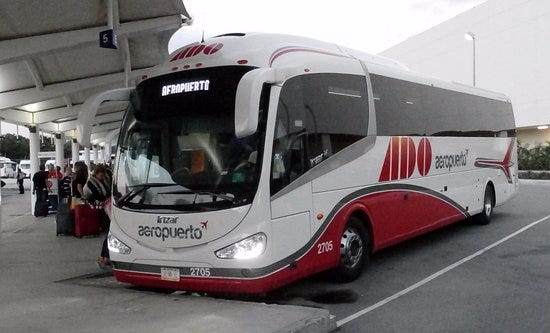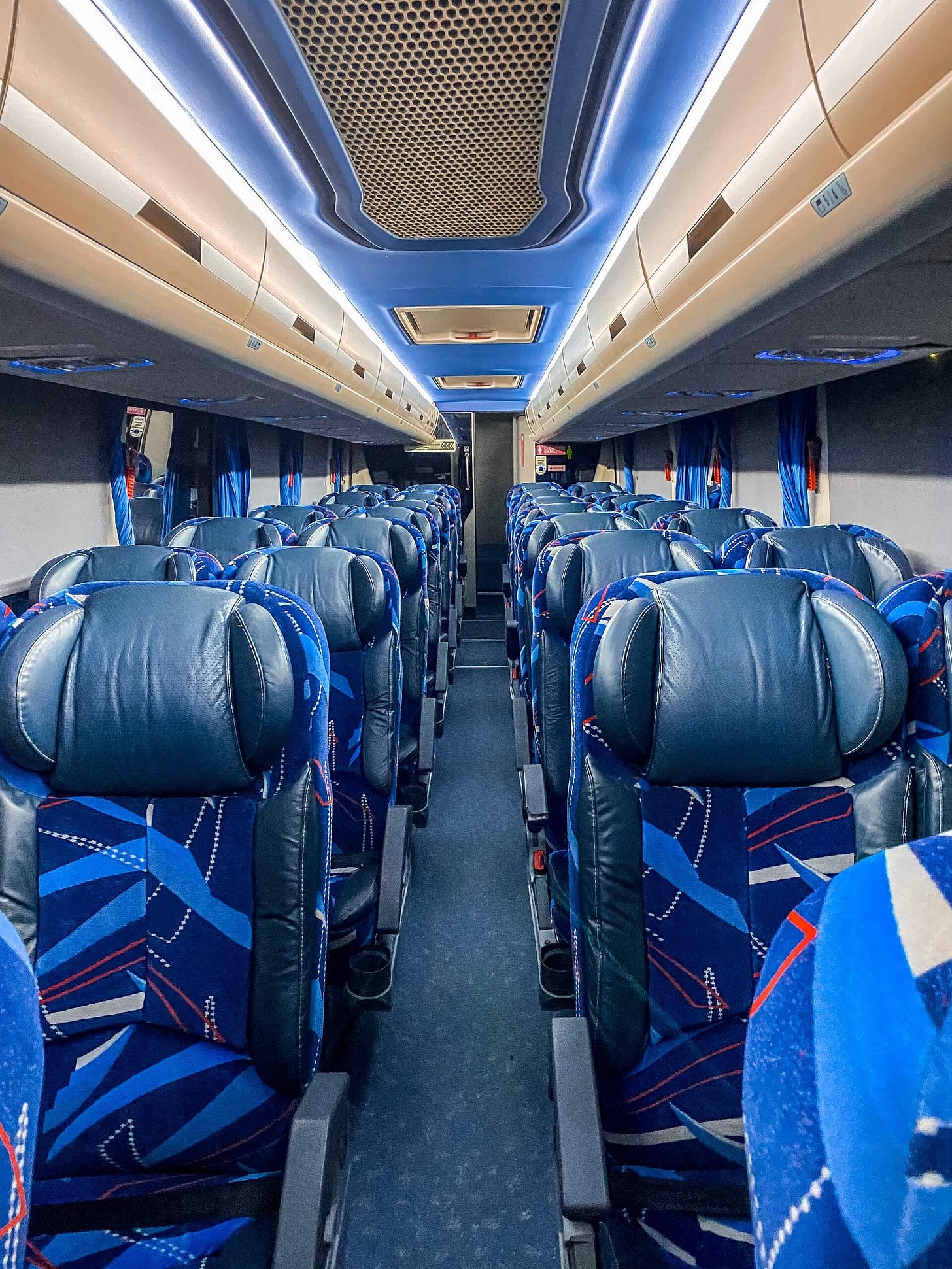A Traveler's Guide to Bus Companies in Mexico
Long time coming on this post - I recently got back from another trip where I extended my time and just took busses to other cities in the states. Honestly Mexico's extensive bus network is one of the best ways to explore the country affordably and comfortably. Unlike the basic bus services familiar to Americans, Mexico’s Intercity and long-distance buses are often way more comfortable. Here’s a breakdown of the top bus companies, routes, costs, and what you can expect from the experience.
Why Choose Buses in Mexico?
Comfort and Amenities: Mexico's buses often have reclining seats, air conditioning, onboard entertainment, and sometimes even food services. Of course, there are tiers, but the lowest tier is better than the Greyhounds of America.
Cost-Efficiency: Affordable alternative to domestic flights. Lot of cities don’t even have airports. A lot of the best cities in Mexico are only accessible by bus or car, but there are way more logistical and safety issue with trying to drive multiple hours across a latin American country.
The Top Bus Companies in Mexico
This should give you an overview of companies in Mexico. Each company covers its own region and has its own routes and tiers.
ADO (Autobuses de Oriente)
Regions Covered: ADO primarily serves southern Mexico, including Yucatán, Quintana Roo, Oaxaca, and Veracruz.
Service Tiers: ADO GL (luxury), ADO Platino (premium), and standard ADO.
General Costs: Expect to pay between $500 and $1000 MXN for long distances (e.g., Mexico City to Oaxaca).
What to Expect: Comfortable seating, onboard entertainment, Wi-Fi on some tiers, and a restroom. If you are tall - I would, at minimum, go with ADO GL. It cost a little more, but the seats are more comfortable and they recline a little further. I would only take standard ADO if the trip is 2-3 hours. Past that, you’ll want a little more luxury. Platino is the top class, these are space shuttle. While the other busses have TVs, the Platino has TVs per seat, sometimes leather office style seats. A 4 hour trip might be 900 pesos, but its worth it.
ETN (Enlaces Terrestres Nacionales)
Regions Covered: ETN operates primarily in central and western Mexico, including Guadalajara, Jalisco, and Guanajuato.
Service Tiers: Mostly premium and luxury services.
General Costs: Tickets range from $600 to $1,000 MXN, depending on the distance.
What to Expect: Spacious, highly comfortable seating (some buses even have individual pods), onboard snacks. I personally like ETN more than ADO, No idea why, it just feels a little better despite not having as many tiers.
Primera Plus
Regions Covered: This line connects central and western Mexico, including Guadalajara, San Luis Potosí, and Querétaro.
Service Tiers: Offers standard and luxury options.
General Costs: Fares average between $400 and $800 MXN.
What to Expect: Reclining seats, onboard entertainment, USB ports - I’d make a note that on all of these buses, just because it says they have USB ports and sometimes power outlets, they don’t always work. I would suggest packing a power bank, just in case.
Omnibus de México
Regions Covered: Primarily north and central Mexico.
Service Tiers: Executive, Premier, and standard services.
General Costs: Tickets range from $300 to $700 MXN.
Turistar
Regions Covered: Focuses on the Pacific Coast and northern Mexico.
Service Tiers: Primarily premium services.
General Costs: Prices range from $500 to $900 MXN.
What to Expect: Often, they have more bilingual staff because they operate closer to the border and pass through coastal towns that get more tourists. But Don’t bet on it. Either way, you don’t need much Spanish to know how to get on a bus and find a seat
Tiered Bus Services: Economy, Executive, and Luxury
Mexico’s bus companies typically offer three service levels, depending on comfort and amenities:
Economy Buses: Basic services, affordable fares, and fewer amenities—suitable for short trips or those on a tight budget. Doesn’t have personal air-conditioning. and sometimes the bus AC doesn’t work. keep that in mind
Executive Services: Comfortable, air-conditioned seating, better choice for long journeys or if you are taller than average.
Luxury Services: Extra legroom, fewer seats per row, Wi-Fi, meal services, and spacious seats. Perfect for a first-class experience.
*Wifi - Executive services also usually have wifi. I have no idea how these systems work, but they are never that great. If you don’t have regular cell phone service, neither will the bus, so wifi will cut out when in more desolate areas.
General Cost Overview
The cost of bus tickets in Mexico varies depending on the service tier and distance:
Short Routes (Under 200 km): Typically between $150 and $400 MXN.
Mid-Range Routes (200-500 km): Costs range from $400 to $800 MXN.
Long-Distance Routes (500 km+): For premium tiers, tickets typically range from $800 to $1,500 MXN.
What to Expect When Traveling by Bus in Mexico
Booking Options: I would suggest buying your ticket online. They all have websites and apps. You can also pick your seat online. I often try to wait till a day before and book a row with no other people and have a better chance than having a row to myself.
Boarding Process: Mexico’s bus terminals (like TAPO in Mexico City) are organized pretty organized. When you book online, you should check to see which bus stations it leaves out of. In big cities, there might be multiple stations, and some of them might be closer to others. For smaller regional buses, they might be semi random locations.
Amenities Onboard: Amenities vary by service tier but generally include reclining seats, air conditioning, entertainment screens, and restrooms. *Economy will not have a bathroom. They might stop every couple hours to let people off, but if you book a 4 hour economy trip and need to piss, you might be out of luck for a while until the next stop
Safety and Security: Mexican buses, especially luxury ones, are generally safe, with baggage checks and onboard attendants for long journeys. Buses make money on safety, If you are traveling in a heavy cartel areas, ’s not unheard of for a bus to get stopped and people to get bribed, but that’s never happened to me in dozens of trips. On some buses you might notice the driver or attendant walk up the isle and record every passenger. This is a safety feature so there’s some sort of record of who is on the bus
Tips for a Smooth Bus Journey
Booking Ahead: You can almost always just arrive at a bus station and book a ticket, but in the off chance its booked and another company doesn’t have the route, you’re now fighting additional delays. Its Mexico, so you never know what might happen.
Choosing the Right Tier: I suggest you choose your tier wisely.
Packing Essentials: Bring snacks, water, a power bank, travel neck pillow and a jacket. On the off chance the bus AC works, it might be freezing inside. Even if there is more leg room, taller people are gonna suffer a little bit.
Finding Bus Tickets Online
In some cases, you can also use the aggregator websites. You can get and idea of which bus goes where and book directly on the website, but you can often find some of the smaller bus companies. Personally, unless you’re really on a budget, I wouldn’t go with the smaller regional ones. They are sometimes owned by the bigger companies, sometimes bought, but they are usually much more bare bones. I’ve also seen some of them pick up in random parking lots instead of bus stations.
ClickBus
Overview: ClickBus lets you compare tickets from major lines, including ADO, ETN, and Primera Plus.
Busbud
Overview: An international platform featuring routes in Mexico. Offers language support and prices in various currencies.
Reservamos.mx
Overview: A local aggregator with budget-friendly and regional options, also featuring user reviews and discount options.



